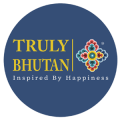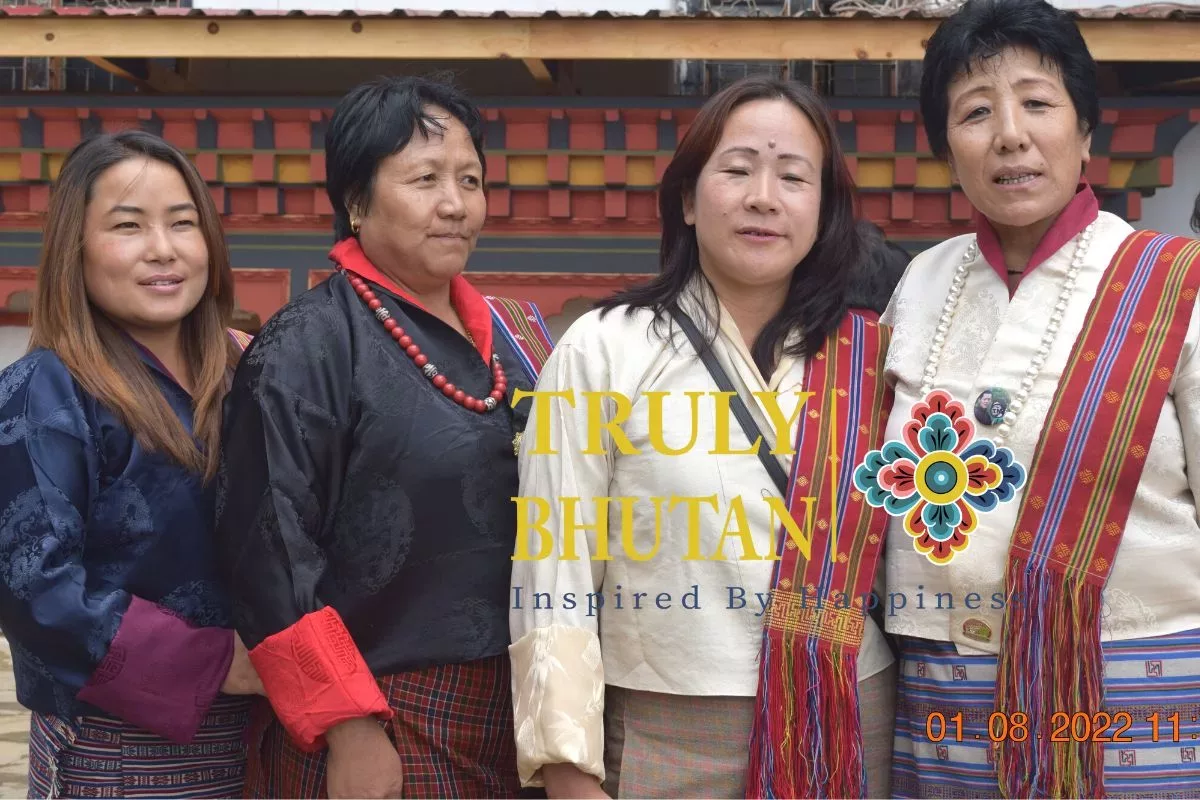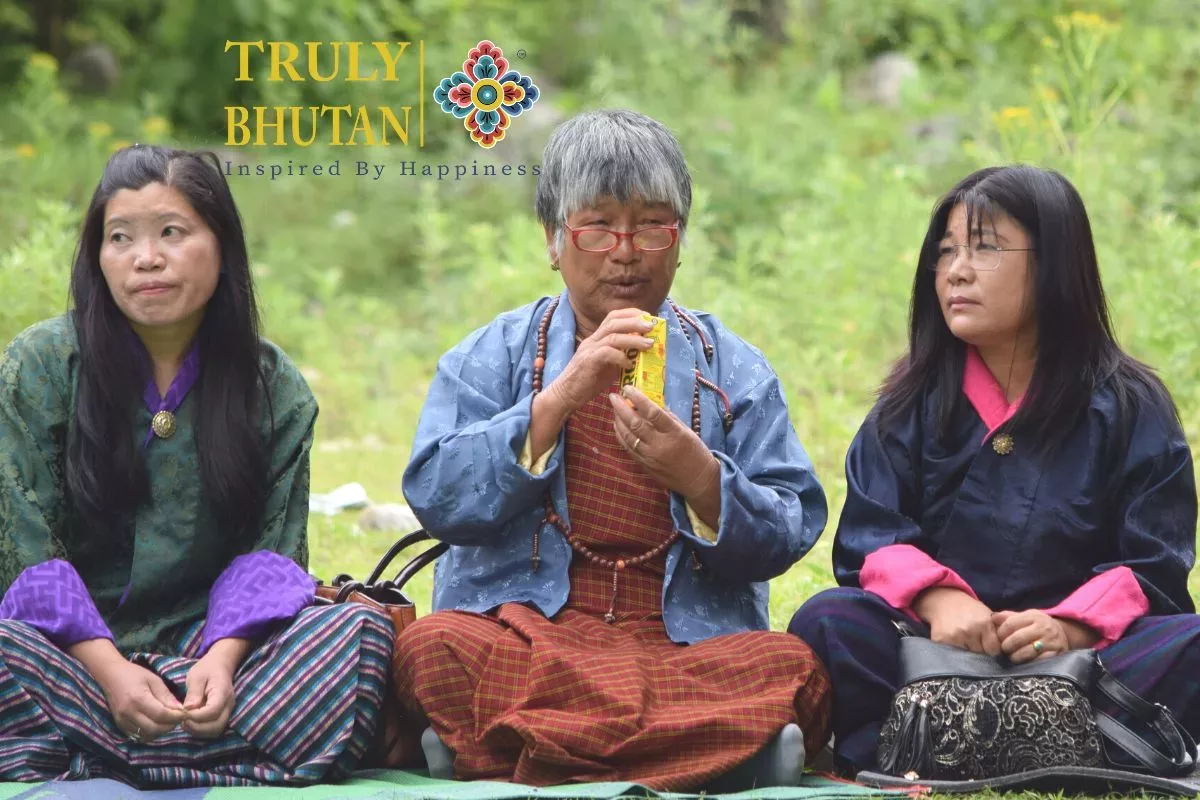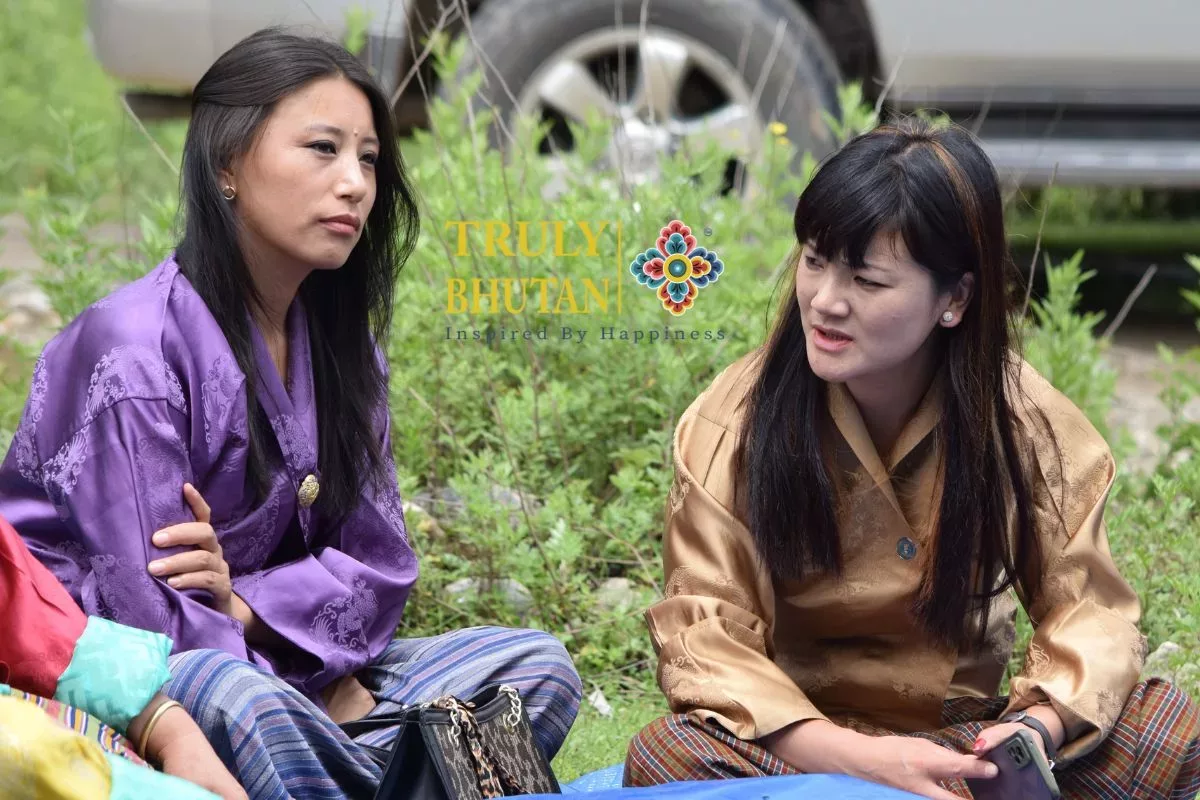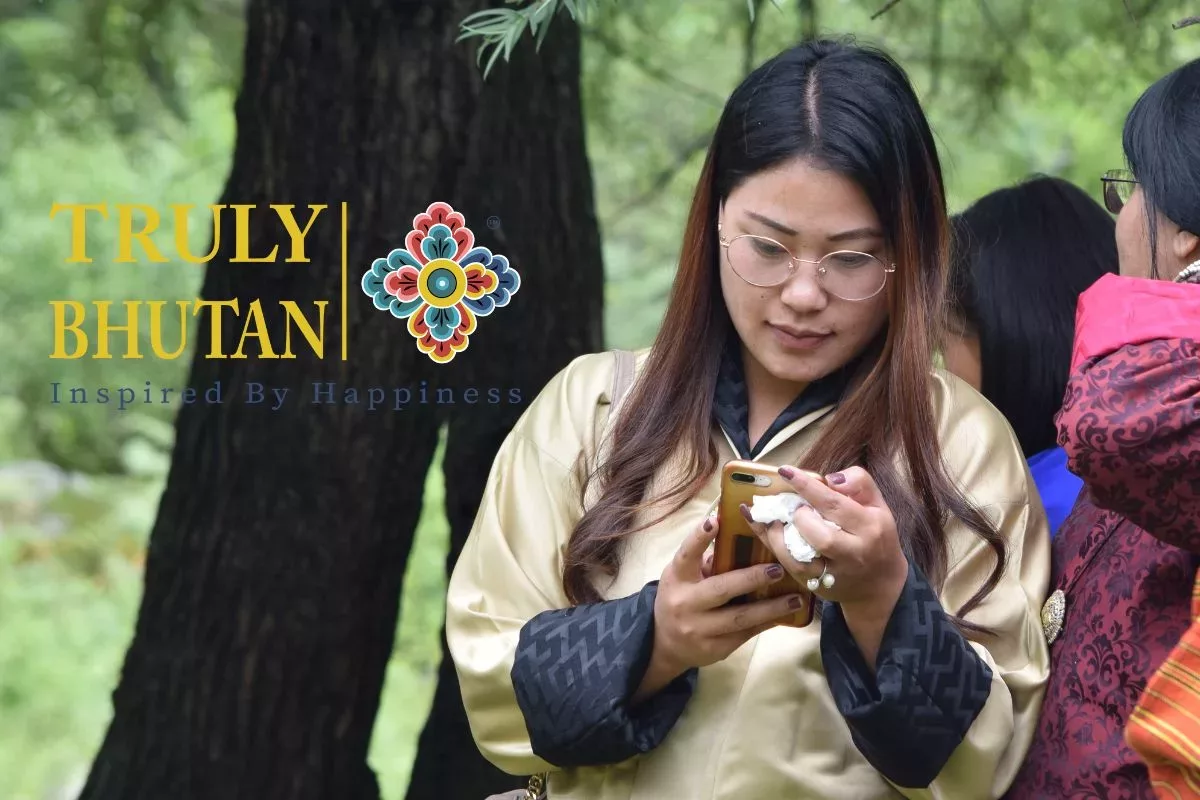Detailed Program
The flight into Paro is a befitting introduction to the spectacular beauty of Bhutan. If the weather is clear you can see magnificent views of the peaks, giving way to the lush green Paro valley as you land on arrival at Paro international airport. Upon your arrival at Paro international airport, our representative from Truly Bhutan will receive you.
Overnight stay in the hotel, Paro.
Places and attractions:
- Rinpung Dzong
- Drukgyel Dzong
- Taktshang
- Kyichu Lhakhang
- Kila Gompa
- Dungtse Lhakhang
- Tachog Lhakhang
- Dzongdrakha
Accommodation options:
The most valuable and important thing in life is marriage and family, so we start the day with a wedding at a local house. In Bhutanese traditional marriage the bride and groom dress up in expensive hand-woven silk costumes called Gho and Kira. The marriage ceremony starts with good luck traditional rituals by a monk. The couple then commits, exchange well-wishing Khadar (scarf), offer gifts, drink wine and later visit some sacred temples.
Visits will include Kyichu Lhakhang, built in 659 A.D by the Tibetan king Songtsen Gonpo; it is one of the oldest temples in Bhutan. Later we will visit the ruins of Drukgyel Dzong, which kept at bay invasions from Tibet in the 17th century. There we can spend some time taking photographs of the scenery and also of a newly married couple with nature.
After lunch we will then Paro Rinpung Dzong. Under the command of Zhabdrung Ngawang Namgyal, the dzong was built in 1646 and it was established as the administrative and monastic center of the western region and it became known as Rinpung Dzong (meaning Heap of Jewels). The dzong is listed as a tentative site in Bhutan’s Tentative List for UNESCO inclusion.
Later we will visit Ta Dzong, which was established in 1968, in the renovated ancient Ta-dzong building under the command of His Majesty, the king Jigme Dorji Wangchuk. It houses some of the finest specimens of Bhutanese art, including masterpieces of bronze statues and paintings. Suitable galleries were constructed to house the extensive collections. The works of art are elegantly displayed on scientific lines.
Overnight stay in the hotel, Paro.
Places and attractions:
- Rinpung Dzong
- Drukgyel Dzong
- Taktshang
- Kyichu Lhakhang
- Kila Gompa
- Dungtse Lhakhang
- Tachog Lhakhang
- Dzongdrakha
Accommodation options:
Drive to Thimphu, and stop en route to view the picturesque Tachog Lhakhang, the hereditary place of worship of Bhutan’s Iron Bridge Builder. A short hike down to Iron Bridge made by iron chains. On arrival in Thimphu, visit the National Memorial Chorten, dedicated to world peace and prosperity. It was built in 1974 in memory of the Third King of Bhutan. You will find Thimphu residents circumambulating the Stupa throughout the day praying for universal harmony and all sentient beings.
Visit Buddha point to see the Buddha Stupa and get a bird’s eye view of Thimphu valley. It is popularly known as the “Buddha Point” where a statue of the Buddha measuring 54 meters tall sits above the Thimphu valley. Also visit the National Institute of Zorig Chusum, which is the center for Bhutanese Art education. It was set up by the Government of Bhutan with the sole objective of preserving the rich culture and tradition of Bhutan and training students in all the traditional art forms.
The curricula cover a comprehensive course of drawing, painting, wood and slate craving, embroidery, sculptures, weaving, and papermaking. And the Folk Heritage Museum was opened in 2001 from the initiative of the founder Her Majesty the queen’s mother Dorji Wangmo Wangchuk. The Museum is housed in a 3-story 19th-century traditional rammed mud and timber house aged more than 150 years. Later in the evening, we will be visiting Tashichho Dzong the “Fortress of Auspicious Religion” which today like most of the other fortresses in Bhutan serves as the Administrative and Religious Center.
Evening at leisure in Thimphu town and overnight stay in the hotel, Paro.
Places and attractions:
- Tashichho Dzong
- Semthoka Dzong
- Dochu La Pass
- Memorial Chorten
- Changangkha Lhakhang
- Zangdopelri
- The Tallest Buddha Image
- Tango And Cheri Monasteries
- The Handicrafts Emporium
- Traditional Medicine
- Zorig Chusum Institute
- National Library
- Weekend Market
- Botanical Garden
- Thadrak Goemba
- Tashigang Goemba
- Chizhing Samtencholing Lhakhang
Accommodation options:
After breakfast, we drive out of Thimphu to Punakha. Along the way, you will drive by the Dochula pass, where 108 stupas were built as a war monument after the 2003 war in southern Bhutan against Indian insurgents, and on a clear day, you will see the Himalayan mountain ranges.
Later after lunch, we will hike to Chimi Lhakhang (temple) also known popularly as the “fertility temple”. This temple is reputed for granting children to couples who come to seek blessings for a child. People who come to this temple are blessed with a wooden phallus with a silver handle and the bow and arrows of the famous 15thcentury Buddhist saint called “Drukpa Kuenley” to whom this temple is dedicated.
Then we will directly check into the hotel. After resting for some time then we will visit Punakha Dzong located in between two rivers, mo Chu (Female River) from its left and pho Chu (Male River) from its right, it was built in 1637 by Zhabdrung Ngawang Namgyel in a commanding position at the confluence. The Dzong was called Druk Pungthang Dechen Phodrang (the palace of Great Happiness) in the olden days and is arguably the country’s most attractive Dzong.
Overnight stay in the hotel, Punakha.
Places and attractions:
- Punakha Dzong
- Khamsum Yulley
- Talo Goenpa
- Nalanda Buddhist College
- Chorten Nyingpo Lhakhang
- Sangchen Dorji Lhuendrup
- Limukha Village
- Ritsha Village
Accommodation options:
In the morning drive or walk to Yabesa village and hike to through rice fields and up to Khamsum Yulley Namgyal Chorten, built by her majesty the queen Ashi Tshering Yangdon Wangchuk. Perched high on a hill on the bank of the river, the Chorten houses paintings belonging to Nyingmapa Traditions.
Enjoy a picnic lunch on a picturesque riverside before driving to explore Wangduephodrang Dzong. Built-in 1639, the strategically located Dzong is perched on a spur at the confluence of two rivers. In the 17th century, Wangduephodrang played a critical role in unifying the western, central, and southern regions of the country.
Overnight in Punakha.
Places and attractions:
- Punakha Dzong
- Khamsum Yulley
- Talo Goenpa
- Nalanda Buddhist College
- Chorten Nyingpo Lhakhang
- Sangchen Dorji Lhuendrup
- Limukha Village
- Ritsha Village
Accommodation options:
Drive to Trongsa for about 5 to 6 hours. A short stop at Wangdi town. Continue your journey crossing Pele la Pass (3,300m), the traditional boundary between east and west. Stop for lunch at Chendbji near a large historic stupa built in the Nepalese style. Visit Trongsa Dzong. Then visit Ta Dzong (watchtower) museum. Then continue to Bumthang for about 3hrs. On the way stop at the Chumey weaving center.
Overnight at tourist Lodge.
Places and attractions:
Accommodation options:
Morning – visit Kurjey Lhakhang, Guru Rinpoche meditated here in 8th century; Jambay Lhakhang built in 7th century by Tibetan King Songtsen Gampo. Tamshing Lhakhang founded in 15th century by Pema Lingpa the treasure reveler, Kencho Sum Lhakhang. Later see the Jakar Dzong, the Dzong. Evening take a stroll through Bumthang market area.
Overnight in hotel.
Places and attractions:
Accommodation options:
The route back to Pelela Pass (alt. 3,300 m) via Trongsa, Phobjikha is one of the few glacial valleys in Bhutan and chosen home of black-necked crane, which migrate from the central Asiatic Plateau to escape its harsh winters. Explore Phobjikha and also visit Gangtey Monastery, the only Nyingmapa Monastery in Bhutan. Late afternoon drive to Punakha for Overnight in Hotel.
Places and attractions:
- Punakha Dzong
- Khamsum Yulley
- Talo Goenpa
- Nalanda Buddhist College
- Chorten Nyingpo Lhakhang
- Sangchen Dorji Lhuendrup
- Limukha Village
- Ritsha Village
Accommodation options:
Today after breakfast we will be driving back to Paro. Today we will be spending the whole day taking pictures. We will be stopping at Botanical Park on the way, where we will be spending leisure time taking pictures. We will be stopping at various locations for photographs.
After lunch at Paro, we will drive towards Chelela pass which is one of the highest Motorable passes in Bhutan for more photographs. You can wear our traditional dress for the photograph or you can bring your wedding dress.
Overnight stay at Paro.
Places and attractions:
- Rinpung Dzong
- Drukgyel Dzong
- Taktshang
- Kyichu Lhakhang
- Kila Gompa
- Dungtse Lhakhang
- Tachog Lhakhang
- Dzongdrakha
Accommodation options:
After early breakfast, we will drive towards the base of Tigers nest and we will start our hike. Taktsang is one of the most sacred pilgrimage sites in the Himalayan World. The temple itself is perched on a granite cliff that drops 2,000 feet to the valley floor. The name is derived from a legend that Guru Rinpoche flew across the mountains to this spot on the back of a tigress.
(You may bring our traditional dress or your wedding dress to take a photograph at the Tiger’s Nest Temple.)
Later in the evening, we will arrange a Cultural Show. You will be witnessing our traditional folk dances and also mask dances that are usually performed during the famous festival called Tshechu here in Bhutan. Colorful Bhutan Travels arranges cultural shows for their clients to take back home not only the memories of the natural beauty of the kingdom of Bhutan but also some memories of our unique culture (songs and Dances) and traditions that you may cherish throughout your life.
Places and attractions:
- Rinpung Dzong
- Drukgyel Dzong
- Taktshang
- Kyichu Lhakhang
- Kila Gompa
- Dungtse Lhakhang
- Tachog Lhakhang
- Dzongdrakha
Accommodation options:
After breakfast, our Team will drive you to the airport for your outbound journey.
Frequently Asked Question
Men traditionally wear the gho, a long robe gathered and fastened at the waist. This is worn with knee-high socks and formal shoes. The Kira, a gorgeous woven garment that covers nearly the entire body from shoulder to ankle, is worn by women.
A vibrant silk jacket completes the look. Traditional dress is still worn regularly throughout the country. If you’re interested, when you come, we can assist you with obtaining your gho or Kira.
Your attire requirements are determined by the season. Given the luggage restrictions imposed by Bhutan’s two airlines, we recommend that you pack carefully. When you book your vacation, we can provide you with ideas. Because Bhutan is a developing country, most of the necessities you want may not be accessible.
Bring any specific medications you may have. Get your contact lenses and a spare set of glasses as well. A flashlight is required. Leisure items such as an iPod, literature, and your favorite herbal tea might be carried. Passengers are only allowed to carry in 200 cigarettes for personal usage if they pay the full fee.
Tourists may blend in with the crowd while taking photos. A Special Permit for Filming, however, must be secured. While shooting images, you should avoid disturbing the festival crowd or distracting the performers. When attending the festival/Tshechu, there is a dress code.
Please avoid wearing caps or utilizing umbrellas. Smoking is not permitted, and guests are not authorized to wear slippers, short skirts, or shorts. The police may verify tour guide licenses at any moment to ensure that tour groups are being led by a licensed Host.
We specialize in small groups and tailor-made individual trips for our clients. Our group departures are assured if at least two people sign up. We normally avoid making our groups large to guarantee that all visitors receive equal attention from guides and leaders. Furthermore, small groups allow for greater itinerary flexibility and access to locations and attractions that large tour groups may not have access to.
Rather than a strict calendar of events, our itineraries are based on an estimated indication of the timetable, breadth of activities, and journey routing. However, alterations to the daily schedule may occur due to local conditions and/or at the request of our guests, as long as there are no financial consequences. These alterations might range from single landmarks to the town or city visited.
Because most clients like to personalize their travels, any package listed on our website can be used as a starting point to create your unique trip. Choose a date that works for you, and we’ll send you a complete itinerary. If none of our existing itineraries suit you, we can create one for you. If you do not have a travel partner, we may organize a solo trip for you or find you one.
You will be given moderately spicy Bhutanese food with chilies. The meal is popular among visitors. Chinese and Indian cuisine is also available. Though Bhutanese water supplies are directly from the Himalayas, it is always recommended that you drink bottled mineral water.
- Inclusion
- Exclusion
- Insurance
- Airport pick-up and drop-off by private vehicle.
- 3-star accommodation (4 & 5 stars may require an additional premium update).
- Bhutan visa fee – including all necessary processing
- Route Permit
- Three meals per day during your stay in Bhutan
- A licensed Bhutanese tour guide
- All land transportation by private vehicle
- Camping equipment and haulage for trekking tours
- Sightseeing as per itinerary
- Monuments entrance fees where applicable
- Drinking water
- All internal taxes and charges
- A sustainable development fee of $200. (This sustainable development fee goes towards free education, free healthcare, and poverty alleviation, along with the building of infrastructure.)
- Airfare & Travel Insurance
- Expenses of personal nature, Tips to guides and drivers
- Expenses occurred due to unavoidable events i.e. road wrecks, flight delays etc.
Package does not include insurance of any kinds, and that you are required to obtain separate coverage from your home country before your trip begins.
